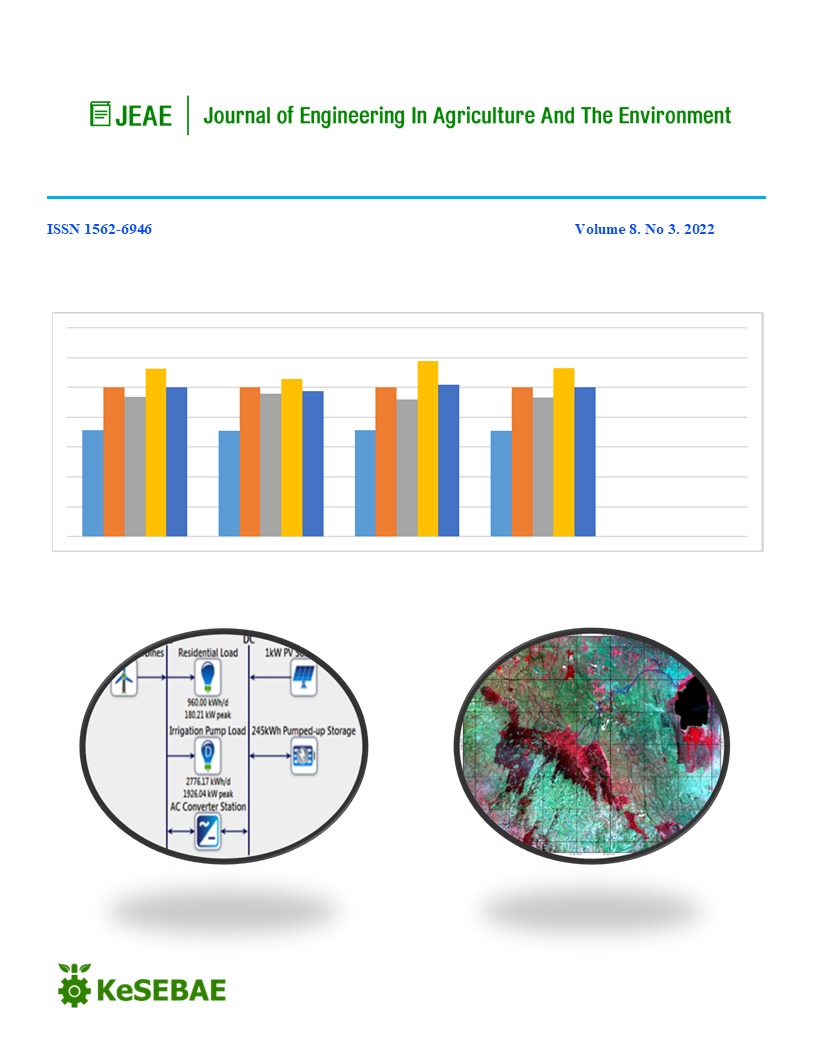Abstract
Lake Nakuru is one of the rift valley lakes that has experienced flooding occasioned by climate change and catchment areas degradation. The increasing water levels have been a great threat to livelihoods and flora and fauna, to the extent of the lake experiencing flamingoes’ migration. There have been attempts to establish the causes of flooding, with some scientists attributing the phenomenon to tectonic movements and geothermal power plant activities. This research aimed at studying the impact of climate change on the rising water levels of the lake. The objective of this study included assessing the rainfall amounts and temperature variations around the lake over time and predicting the lake's flooding by modelling the surface area variations. Validated rainfall and temperature data, lake’s water level data with regards to surface area variations and Mau encroachment data were collected from the Kenya Meteorological Department, GIS applications and Landsat 8 and composite bands 5, 4 and 3 and the Kenya Water Towers Agency, respectively. Statistical analysis was done using Microsoft Excel 2013 and the relationship amongst various variables was determined. The statistical analysis involved a regression model equation, y=0.933x+26.606 with an r2 value of 0.79, where y-Lake Nakuru surface area (km2) and x- count of years since 1990. The findings showed that encroachment of Mau forest and high rainfall and temperature amounts in the 2010-2019 decade attributed to climate change are contributing factors to the lake’s flooding. It is concluded that climate change is a major contributing factor to the rising water levels of the lake and it greatly impacts hydrologic changes that the lake continues to experience. Therefore, catchment areas have to be protected to save the situation, not only for Lake Nakuru but also for other lakes in the region.
References
Choi, D., Gao, Z., & Jiang, W. (2020). Attention to global warming. The Review of Financial Studies, 33(3), 1112-1145.
Chrisphine, O. M., Odhiambo, A. M., & Boitt, K. M. (2016). Assessment of hydrological impacts of Mau Forest, Kenya. Hydrology: Current Research, 7(1).
Cooke, G. D., Welch, E. B., Peterson, S., & Nichols, S. A. (2016). Restoration and management of lakes and reservoirs. CRC press.
Grafton, R. Q., Pittock, J., Davis, R., Williams, J., Fu, G., Warburton, M., ... & Quiggin, J. (2013). Global insights into water resources, climate change and governance. Nature Climate Change, 3(4), 315-321.
Herrnegger, M., Stecher, G., Schwatke, C., & Olang, L. (2021). Hydroclimatic analysis of rising water levels in the Great rift Valley Lakes of Kenya. Journal of Hydrology: Regional Studies, 36, 100857.
Hongo, P. O., & Mulaku, G. C. (2021). Flooding of Lake Nakuru National Park and Its Effects on the Resident Wildlife. Journal of Geographic Information System, 13(6), 660-670.
Iradukunda, P., & Nyadawa, M. O. (2021). Impact of Sedimentation on Water Seepage Capacity in Lake Nakuru, Kenya. Applied and Environmental Soil Science, 2021.
Iradukunda, P., Sang, J. K., Nyadawa, M. O., & Maina, C. W. (2020). Sedimentation effect on the storage capacity in lake Nakuru, Kenya. Journal of Sustainable Research in Engineering, 5(3), 149-158.
Jebiwott, A., Ogendi, G. M., Agbeja, B. O., Alo, A. A., & Kibet, R. (2021). Mapping the trends of forest cover change and associated drivers in Mau Forest, Kenya. Remote Sensing Applications: Society and Environment, 23, 100586.
Koutsoyiannis, D. (2020). Revisiting the global hydrological cycle: is it intensifying?. Hydrology and Earth System Sciences, 24(8), 3899-3932.
Kulkarni, S., Dhakar, K., & Joshi, A. (2019). Alkaliphiles: diversity and bioprospection. In Microbial diversity in the genomic era (pp. 239-263). Academic Press.
Kweyu, R. M., Thenya, T., Kiemo, K., & Emborg, J. (2020). The nexus between land cover changes, politics and conflict in Eastern Mau forest complex, Kenya. Applied Geography, 114, 102115.
Nathan, R. J., McMahon, T. A., Peel, M. C., & Horne, A. (2019). Assessing the degree of hydrologic stress due to climate change. Climatic Change, 156(1), 87-104.
Ogutu-Ohwayo, R., Natugonza, V., Musinguzi, L., Olokotum, M., & Naigaga, S. (2016). Implications of climate variability and change for African lake ecosystems, fisheries productivity, and livelihoods. Journal of Great Lakes Research, 42(3), 498-510.
Onyango, H. P. (2020). Mapping The Flooding Of Lake Nakuru National Park And Its Effects On Resident Wildlife (Doctoral dissertation, University of Nairobi).
Raudkivi, A. J. (2013). Hydrology: An advanced introduction to hydrological processes and modelling. Elsevier.
Schleiss, A. J., Franca, M. J., Juez, C., & De Cesare, G. (2016). Reservoir sedimentation. Journal of Hydraulic Research, 54(6), 595-614.
Tongwane, M. I., & Moeletsi, M. E. (2018). A review of greenhouse gas emissions from the agriculture sector in Africa. Agricultural Systems, 166, 124-134.
Zeppetello, L. R. V., Parsons, L. A., Spector, J. T., Naylor, R. L., Battisti, D. S., Masuda, Y. J., & Wolff, N. H. (2020). Large scale tropical deforestation drives extreme warming. Environmental Research Letters, 15(8), 084012.

This work is licensed under a Creative Commons Attribution 4.0 International License.
